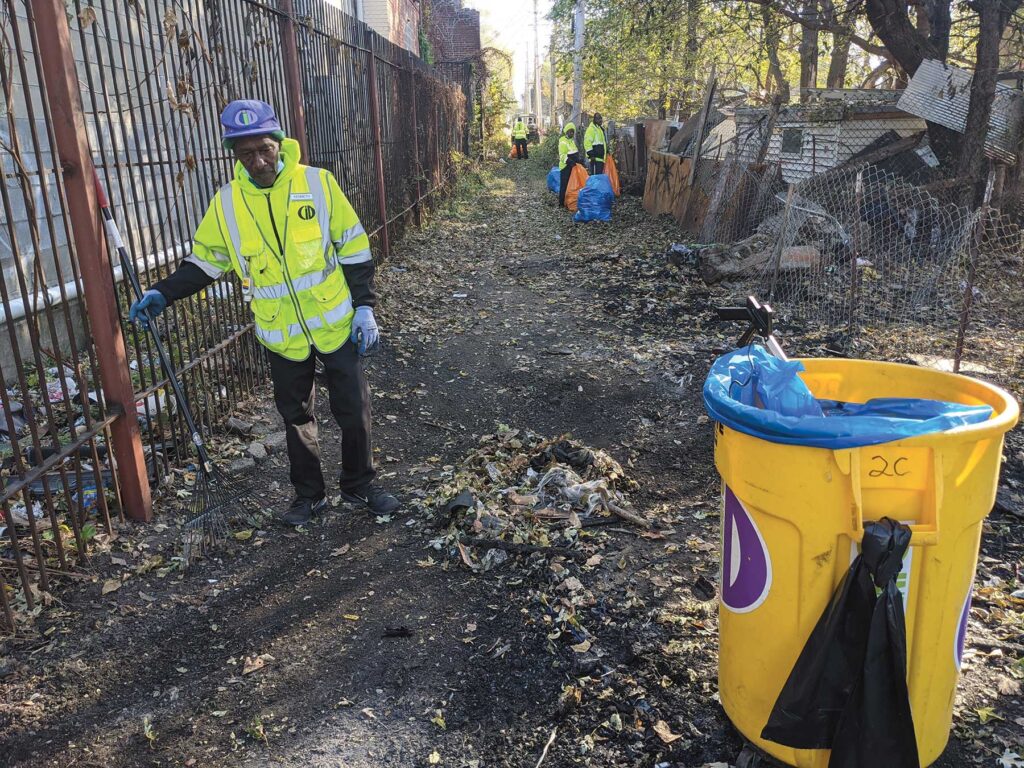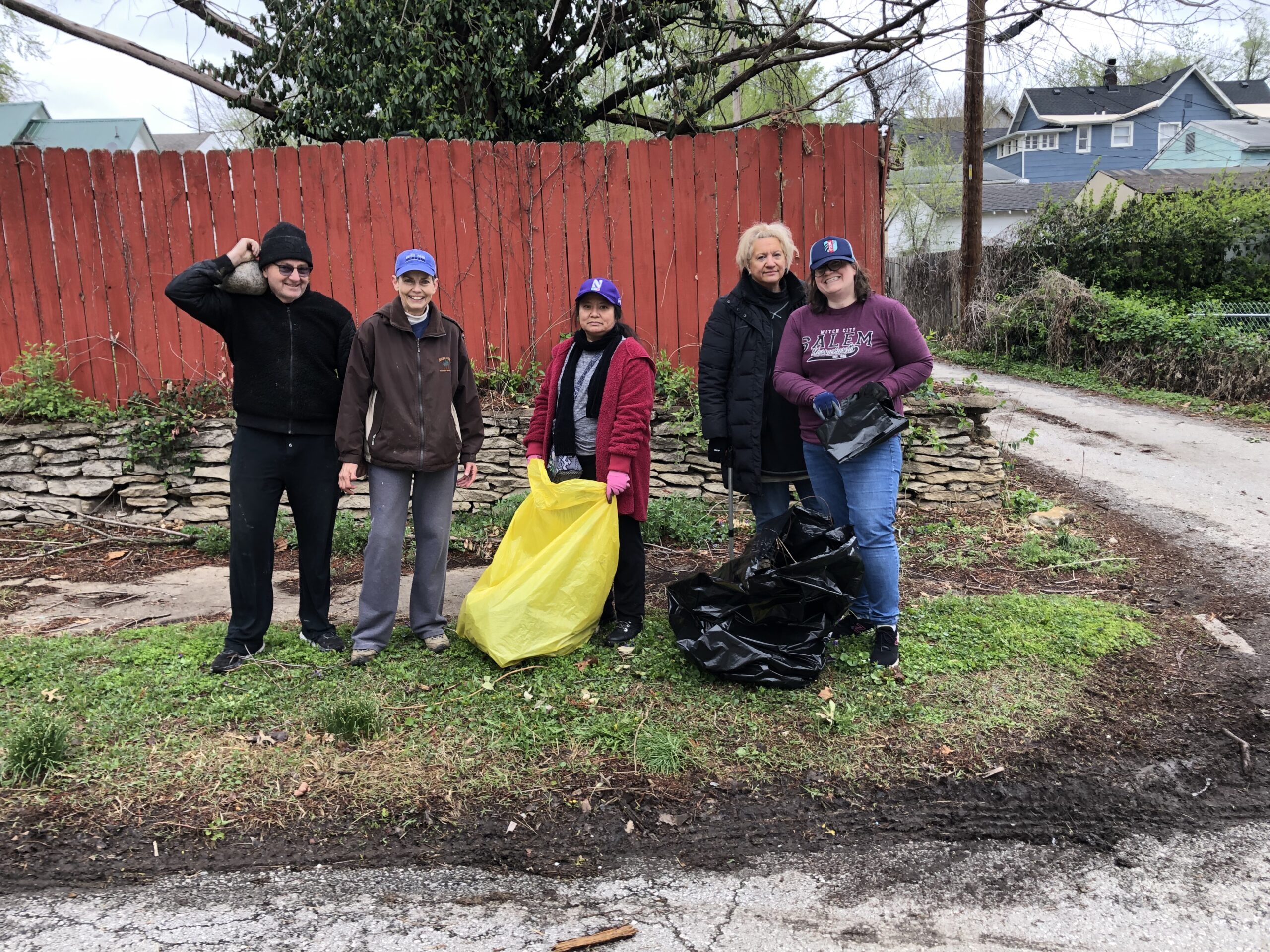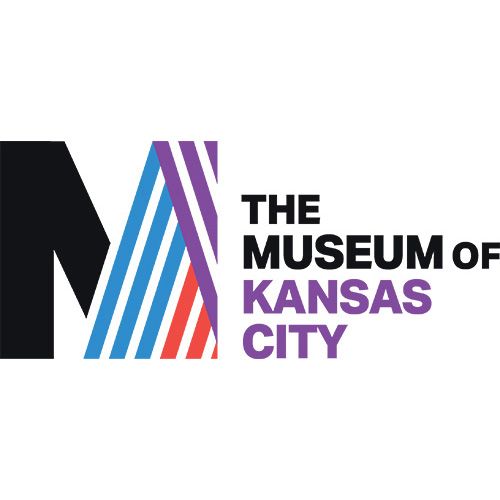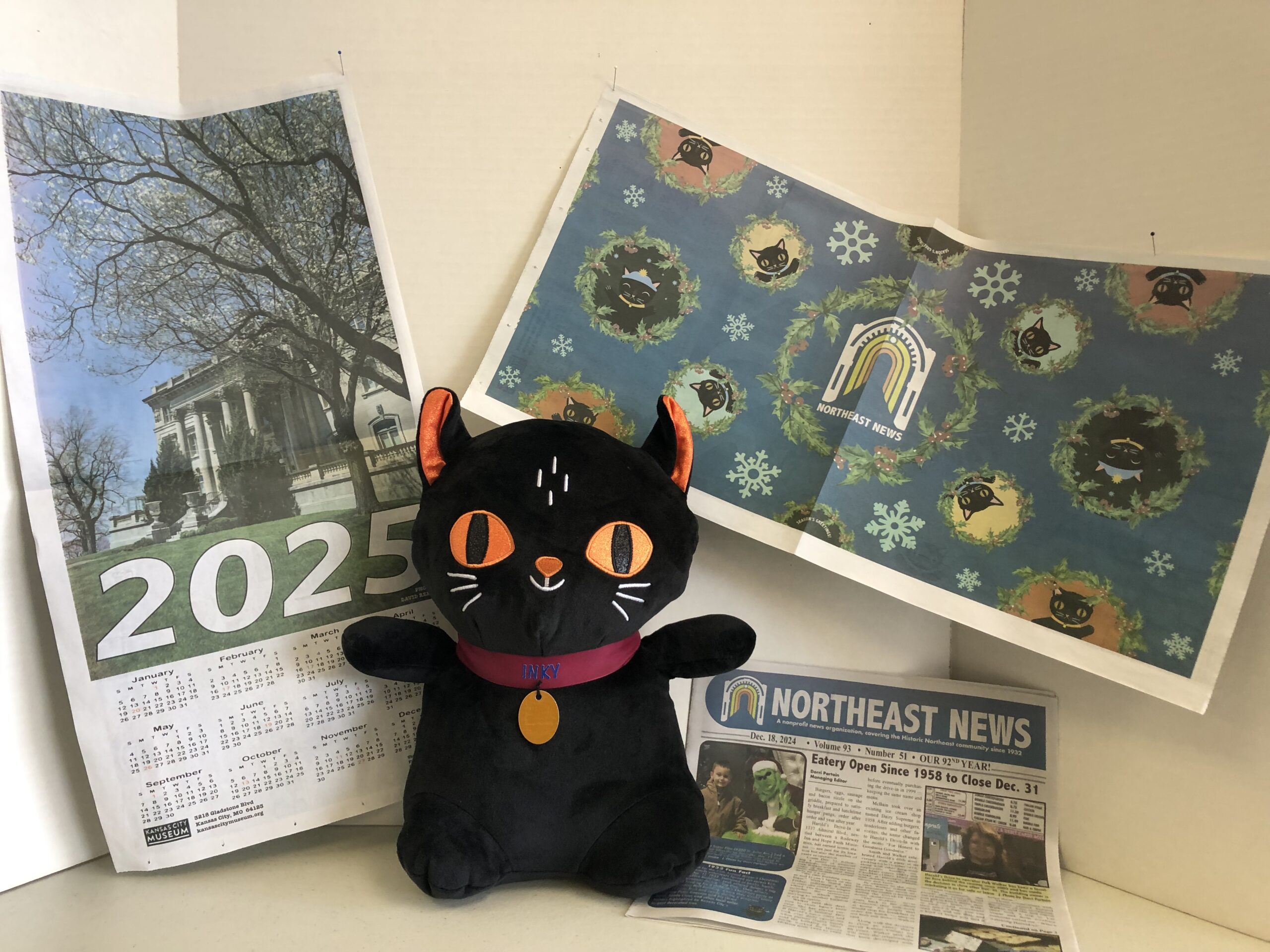
By Abby Hoover
The Independence Avenue Community Improvement District (CID) is adding one more project to their agenda for the summer in finding a permanent solution to the litter-filled and hazardous alleys behind Avenue businesses.
The CID encourages beautification, safety, and economic development by assisting property and business owners with solutions to Independence Avenue challenges.
A long-standing challenge for many business owners, illegal dumping and camping in the public right-of-ways behind their businesses create safety hazards for employees and customers.
Mike Spady, Urban Planner and Director of Operations for the CID, said his crew of Urban Street Ambassadors (USA) cleaned up 29 alleys in 2021.
“Our average alley cleanup is close to 2,000 pounds of stuff,” Spady said. “Take 29 times 2,000, so you’re talking 58,000 pounds of trash was taken out of the alleys out of those 29 cleanups. In reality, more than that. It can add up quickly.”
They remove abandoned furniture, tires, trash, construction materials, and the remains of campsites. If there are people camping in the alley they plan to clean up, they send the Avenue Angels (Titan Security) a few days ahead of time to give notice. Sometimes, the Kansas City Police Department (KCPD) gets involved.
The single day cleanups are usually staffed by five to 10 USAs.
“I usually plan the alley cleanups when we have a full crew, which is either going to be Monday, Tuesday or Thursday,” Spady said. “As far as resources that we spend, well, it takes a lot of man hours to do a typical alley cleanup. We typically can get an alley done in about two hours, sometimes less.”
With 60 hours of intensive labor dedicated to alley cleanups, for a full crew, it’s a huge dedication of time for the CID.
“We work closely with the City,” Spady said. “We don’t do this without the support of the City. The City has a contract with the CID, they pay us to clean the alleys but it’s only $20,000. It seems like a lot of money, but that’s not really a lot of money to do that in there.”
The CID works with the Public Works Department and Solid Waste Division to coordinate pick-ups of the trash they pull out of alleys.
“We’ll get stuff out to the curb, and then they’ll usually bring one of the claw trucks by, or two,” Spady said. “They’ll load it up and they’ll take hold it off. So that’s a typical process to get that done. Ideally, it will happen the same day because, otherwise, if it doesn’t happen the same day, the stuff gets picked through and scattered.”
The CID, in an effort to permanently solve the problem of dumping and illegal activity in the alleys, plans to help business owners apply for vacation of the alley behind their buildings this summer.
They will target 11 alleys, on both the north and south sides of the Avenue, including Indiana to Bales, Bales to Askew, Topping to Lawndale, Lawndale to Oakley, Oakley to Drury, Spruce to Norton, Norton to Myrtle, Myrtle to Cleveland, Van Brunt to Brighton, by the west Aldi location, and north and south between Topping and Lawndale.
Jason Nickles, CID summer intern and University of Missouri – Kansas City urban design and planning student, will focus on the project this summer, along with a local artist, Brian Mafes. He will work with the businesses and surrounding neighbors on creative placemaking projects in the vacated alleys.
They plan to approach business owners in the next few weeks and begin helping them make the applications to the City, who at present owns the alleys. Spady hopes the City will understand the positive result this could have and will lead the application itself, which would save time and make the process smoother.
“Right now we’ve identified the property owners, so we know who all the property owners are and will begin outreach to them to let them know what’s going on,” Spady said. “Jason and I, we just actually physically got done walking a couple of blocks, kind of looking at the property conditions, that type stuff.”
The alleys generally touch commercial properties on the Avenue side, but most touch residential properties on the other side. The CID will contact property owners to see if they use the alley for garage or driveway access as part of the process. They are in the very beginning stages of the project, so locations and a timeline are not set in stone.
“It’s a haven for dumping, homeless camps, criminal activity, essentially, that’s the blight,” Spady said. “We can document all the data from the various crime stops that take place in there. We can document all that, it’s easy to do, but part of the application is going to say ‘What will you do with it after it’s vacated?’ Essentially, once it’s vacated it can become private property.”
He said the alleys would be split down the middle and shared with adjacent property owners, who would potentially be responsible for upkeep.
“Our goal is to have the application submitted, at least for initial review, by August, in a perfect world,” Spady said. “It has to go through planning review, it has to go through utilities review, it has to go through fire review – because alleys are used often to get to fires if one of these houses catch on fire – and then once all of those people get done with it, then it’s going to go to Planning Commission for review, and then we’ll go to City Council.”
They’ll have a reuse plan, which they’re working on now, modeled after the alley behind BP at Van Brunt, which is paved and has a mural.
“Two years ago, we received PIAC funding to get that alley paved, and now there’s a lot less dumping that takes place there and no one’s camping out on asphalt,” Spady said. “They’re camping out in the vacant lots.”
Creating a sense of place for the alley will drive away negative activity, Spady has seen. With lighting, artwork and pavement, the alleys could turn into gardens, pocket parks or picnic areas for employees. Whatever is decided will involve public and neighbor input when the time comes.
“One of my suggestions was following what Pendleton Heights has done, how they’ve named some of the alleys, giving the residents a sense of ownership,” Nickles said. “I think that would do a lot for some of these neighborhoods.”
Mafes is already working in one alley, and plans to remediate invasive plants, plant native plants, and create art out of the recyclable materials that have been dumped there. Throughout the process, he plans to educate the USAs on recycling and reusing.
“His canvas for the summer is that alley, so we’ll see at the end of the summer what becomes of that canvas,” Spady said.
“It’s gonna be interesting to mesh an artist’s brain with the technical or analytical,” Nickles said. “It’ll be interesting to see what comes up in some of these neighborhood discussions and what they want to use for these spaces, and then hopefully, it works well with the artists. They can kind of find a happy medium.”
Nickles knows, especially in neighborhoods that are built so tightly together, that these spaces will be important in the future as development continues along Independence Avenue.
“There’s not a lot of examples out there for this kind of thing, as I’ve found out, so it’ll be interesting to see what kind of work we can do with this space,” Nickles said.
Public meeting times and more details on the project will be shared in The Northeast News as they become available.















